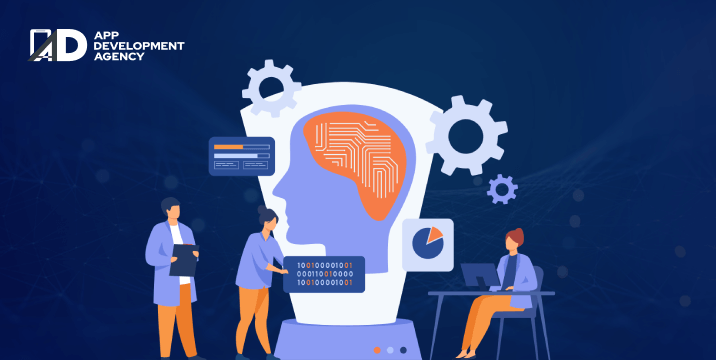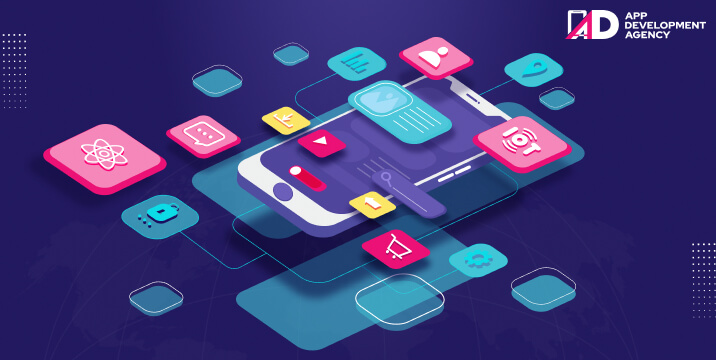Are you familiar with the names Amazon Elastic Container Service (ECS), Google Cloud Run, and Azure Container Instances (ACI)?
These are top Container-as-a-Service providers worldwide positioned directly in the center of the current tech revolution. A huge number of businesses are approaching these providers to migrate their business to the cloud by adopting CaaS models.
According to Future Market Insight, the global CaaS is valued at US$ 1,618.6 Million in 2022. Registering a CAGR of 22.9%, the market is expected to reach US$ 12,750.8 Million.
But let’s delve a bit deeper into what CaaS actually is and what its significant use in the app development process is.
So, let’s get started.
CaaS is the abbreviation of the Container-as-a-Services.
Before understanding what CaaS is, first, we have to learn about what a container is.
The term “container” refers to the executable software units that package up application codes, libraries, and dependencies that are required by the application.
The containers are stored in the cloud which makes it possible to access them from anywhere on any device.
Now, let’s move ahead to learn what is CaaS in cloud computing.
CaaS can be taught as the cloud service model which allows the software developers to upload, manage, start, stop and scale containers, applications, and clusters.
Container-based visualization, APIs, and web portals are used to perform all the above-mentioned operations.
CaaS enables IT professionals to create rich, secure, and fragmented software that can be hosted on both local premises or cloud servers.
Now let’s discuss how Container-as-a-Services (CaaS) works?
CaaS providers host a container name as an orchestration engine which serves as a bridge between the software engines and cloud servers. The orchestration engine makes it easy for organizations to run and maintain their container infrastructure. The engine is also capable of bringing automation to the entire process of containerization starting from deployment to failure management.
In today’s rapidly changing environment where multiple cloud platforms are available, CaaS plays an essential role in automating the hosting and distribution of container-based technologies.
As said, CaaS is an attempt by cloud computing companies to enable developers to streamline the process of building fully scaled containers and application deployment. Beyond this there are several benefits of the SaaS-based cloud model, a few of them are mentioned below:
Every business tends to grow with time, therefore scalability is one of the biggest components of cloud mobile applications.
Many mobile app development companies are considering implementing scalability at the beginning of the project to reduce maintenance costs and combat downtime. This is the time when CaaS applications take the center edge.
CaaS platforms are employed with the automatic scalability function which allows the native applications to quickly shift in response to changing user demand or increased business needs in terms of stability.
The second benefit of CaaS in terms of scalability is smart scaling, which allows applications to run only the containers they need at any given moment, which reduces costs and boosts return on investment.
Portability is another benefit in the portfolio of the CaaS applications. The reason behind the increased portability is that all the dependencies required by an application such as coding files, libraries, configuration files, and so forth are packaged in a container. Furthermore, these containers are lightweight and have all the information stored in them, allowing the applications to run in an isolated environment.
The portability enables the software engineers to deploy their native applications in different environments be it public or private. Thus businesses making use of the CaaS applications can easily switch between the different cloud platforms.
Nowadays when the number of cyberattacks is continually evolving, many organizations started to experience the fear of becoming the victim of cyberattacks. In terms of security, CaaS applications are proven to be highly secure.
All the application data are stored in the containers, and each container is isolated from the other containers. Therefore, if any security breach occurs in any containers, other containers remain safe and free from the attack.
Another benefit of the CaaS is that every container stores application data backed by another container which includes security services such as virtual firewalls, ACL, etc.
The provision of containers has several advantages that can improve the efficiency and effectiveness of the development process. Containers eliminated the applications needed for the environmental dissimilarities to work and run.
By reducing the need for environmental dissimilarities, CaaS makes the process of testing and debugging cloud applications a lot easier. Having all these benefits also works well to make the process of modifying the configuration files a lot easier. By generating new containers and deleting previous ones, IT professionals can simplify the process of application modification.
This is one of the most prominent benefits of the Container-as-a-Service (CaaS) model. As said above, CaaS sets the organization free from infrastructure costs, software licensing, and other overhead costs. All of these benefits will help the organizations to reduce their development cost to the greatest extent possible.
The Container-as-a-Service model makes creating, editing, deleting or replicating containers a matter of seconds thanks to its autonomous nature.
By following the container-based architecture the process of the software development execution plan and operational speed is a lot easier. In the wake of this benefit, the process of releasing the new version of the application is a smooth journey. Furthermore, identifying bugs and integrating new features into the components can easily improve the quality of development.
Also while developing the native applications without understanding the container infrastructure can develop the application which results in a reduced timeframe.
Container-as-a-Services (CaaS) is a fairly stable environment thanks to the cloud infrastructure it follows. There are very rare cases when cloud servers go down. In the unlikely event that the cloud server goes down, they usually have a backup server to ensure that your application will remain running.
Another benefit is that the SaaS service providers have unparalleled capabilities to deal with system issues and complexities.
Are you inspired by the great benefits of the Container-as-a-Services model? A great way to benefit from the CaaS model is by working with CaaS providers in the market.
As said above, there are three CaaS providers in the market named Amazon Elastic Container Service (ECS), Google Cloud Run, and Azure Container Instances (ACI).Let’s have a detailed overview of these Container-as-a-Service (CaaS) providers:
Amazon Elastic Container Service is by far the most prominent name in the field of CaaS. It is a fully automated solution starting from managing and scaling containers. Thanks to the automation process, the developers won’t have to spend most of their time manually configuring or setting up the cloud server for the app.
The provider offers support for the docker containers and provides the software engineers with great control over their applications. They can control all the operations of the application easily by making use of the API calls.
One of the most talkative features of the ECS is that it can monitor and evaluate CPU and memory utilization. With this, the IT professionals have better information on the usage of the hardware resources, so they can take necessary actions to speed up the process.
A fully managed serverless platform, Google Cloud Run makes it possible to develop and deploy applications using a variety of programming languages including Go, Python, Java, Node.js, .NET, and more. It is employed with the Cloud Run Jobs feature which makes it easy to run database migrations, nighty reports, or batch data transformation a lot easier.
In a nutshell, Azure Container Instances are managed services that enable you to deploy containers directly on the Microsoft Azure public cloud without having to use virtual machines.
It is the responsibility of the users to launch the new containers on Microsoft Azure, the rest of the work will be handled by Microsoft.
You can opt for any CaaS provider to make your app development more accessible, faster, and cheaper with CaaS.
The most common examples of the Container-as-a-Service model are Amazon Elastic Container Service (ECS), Google Cloud Run, and Microsoft Azure Container Instances (ACI).
Some of the most popular cloud services are as follows:

Healthcare industry is stepping up by the day with every new advancements in E-consultations, real-time diagnosis, telemedicine, AI enabled robot systems to do routine unskilled tasks, accessing digital therapeutics provided by immersion technology tools. Healthcare industry data flows from operations to analysis. It eventually has to abide by a structure to store critical information about …
Continue reading “How Does Healthcare Intersect with Cloud Computing in 2023?”
Read More
Instagram suggests reels based on what you’ve watched before, but how does it decide what to suggest? Using machine learning algorithms, Instagram determines which reels a user should engage with based on which reels they have interacted with previously and whether they have been in contact with the creators. Machine learning (ML) is the branch …
Read More
JavaScript frameworks like React, Angular, Vue, Svelte and JS templating engines like Template 7, Squirrelly, JSRender, Jade Language, Marko, Hogan, Webix, Pug, Underscore, Nunjucks, EJS, doT, Handlebars, and Mustache offer simple templates to give developers a starting point and let them go over that first bump of getting something, anything in the browser. Once that …
Continue reading “ReactJS for IoT Apps in 2023 and Beyond”
Read More